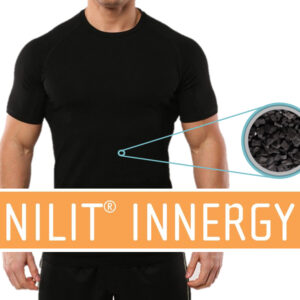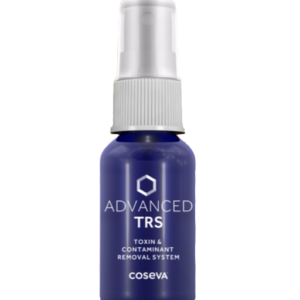The World Health Organization ranks migraines as one of the top 10 most debilitating illnesses.
“Estimates say about 12% of Americans or close to 40 million people in the U.S. alone suffer from migraines on a regular basis.”

Cannabis and CBD show great promise as possible solutions. There is a growing interest in a cannabinoid CBG and its effectiveness in alleviating Cancer symptoms and even migraines.
The endocannabinoid system interacts with the entire body and migraine pathways, lets see how.
CBG and Migraines: How the Endocannabinoid System May Help You
The exact (this would be impossible – nothing is uni-polar nor specific in health) cause of migraines is yet to be determined. Nevertheless, migraine sufferers have identified a set of common triggers that can set off an attack, including emotionally-charged experiences, hormonal changes, certain foods or diets, environmental factors like allergens or weather, medications, and more.
However, science is yet to identify any pathway that causes migraine pain. This is evidence that the scientific method is fundamentally flawed, but it’s all we have so les carry on.
How does the endocannabinoid system come into play as a potential way to provide relief?
There are specific regions in the brain identified in migraine pain, which contain endocannabinoid receptors like CB1 and CB2.
Studies have shown that activating these regions can help treat migraine symptoms, including convulsive electrical impulses, as well as acute pain in patients with seizures, AIDS, cancer, and other chronic illnesses.
If you’re familiar with the reported benefits of CBD. It’s no surprise that stimulating and regulating the ECS can help ease migraine pain. Thanks to the system’s ability to regulate bodily processes, it may provide a multi-pronged pain relief approach.

What is CBG?
CBG is one of the naturally occurring cannabinoids in the cannabis plant. CBG usually begins as cannabigerol acid (CBGA) when in a raw state. When exposed to oxygen, UV rays, and higher temperatures, it transforms into an activated form, just like other cannabinoids (THCA -> THC)
Based on the conditions, CBGA could transform into CBG or THC, though THC is usually the most common result. That is what makes CBG quite a rare compound.
All cannabinoids are incredibly similar in their molecular structure, though some minute differences tend to alter their potential therapeutic effects. For instance, CBG is non-intoxicating, unlike THC. This means it won’t give you a “high” nor does it come with perception-altering effects. That makes it similar to CBD, at least in terms of the experience.
Potential Medicinal Benefits of CBG
Many users are curious about the therapeutic potential of secondary cannabinoids for alleviating migraines and other conditions. Much of the research available today focus on CBD and THC, and there’s still much to learn about them. Currently, there are only a few studies on the secondary cannabinoids and they are still in the very early stages of research.
To date, scientists have only studied CBG for the following medical effects:
CBG for Cancer symptoms
In a more recent study published in 2014, researchers investigated the anti-tumoral qualities of CBG on the colorectal cancer cell lines. CBG seemed to block carcinogenic activity. The researchers, in their second phase of the study, used mouse models for colon cancer. They detailed how CBG promoted apoptosis in cancer cells and decreased colorectal cancer’s cellular growth in rodents.
CBG for Glaucoma
In 1990, a study in the Journal of Ocular Pharmacology sought to explore the ocular and central effects of cannabigerol and delta 9-tetrahydrocannabinol. The study determined that both CBG and THC produced a significant drop in cats’ measured ocular pressure. However, CBG seemed to have fewer negative side effects or reactions than THC. Due to the demonstrated decrease in pressure and no adverse reactions, the study concluded that CBG and the related cannabinoids could be useful in the treatment of glaucoma.
CBG for Cancer and Huntington’s
In a study published in 2015, researchers studied CBG and some tentative Huntington’s disease models. The experiment demonstrated that CBG treatment enhanced the body’s antioxidant responses, resulting in significant recovery in a specific motor skills test. The study concluded that the results open new research avenues to the treatment of neurodegenerative diseases like Huntington’s Disease.
Available Scientific Evidence on CBG for Migraines
There are no studies that have studied CBG for the treatment of migraines or headaches. While cannabis is generally already under research for treating migraines, no study focuses explicitly on CBG and migraines treatment. Despite this, there’s an overwhelming number of positive results from users who use it to ease migraines.
As mentioned earlier, cannabis by itself holds a lot of promise for targeting migraines. It effectively regulates the trigeminovascular system, which is the primary target for novel migraine treatments. This system comprises small pseudounipolar sensory neurons. These come from the upper cervical dorsal and trigeminal ganglion nerve roots.
A number of patient surveys and case studies support the use of cannabis in reducing migraine activity. CBG appears to be a more accessible, non-intoxicating compound that can be used widely in migraine therapy and as an alternative to THC.
Moreover, scientific evidence points at CBG being effective in reducing ocular pressure, which is a symptom of glaucoma exhibited by severe headaches around the eyes. Intraocular pressure is one possible cause of localized pain felt during a migraine or acute headache.
As such, CBG intervention may be helpful for migraine prevention or during a migraine attack.
Research also demonstrates the effectiveness of CBG in neuroprotection and easing inflammation. CBG could perhaps help alleviate migraines by boosting neuroprotection before your brain kicks into high gear.
CBG has also seemed to work synergistically with a number of pain-relieving and anti-inflammatory terpenes like Linalool and Limonene to induce better pain and inflammation relief than either compound alone.
CBG And Migraines
Science is still far from providing conclusive information about CBG and migraines. However, we hope that this post encourages you to explore new options for managing migraine pain. If you do choose to try out CBG oil, always start with low doses. Experiment with low strength CBG first and then gradually raise your dosage to find your sweet spot.






